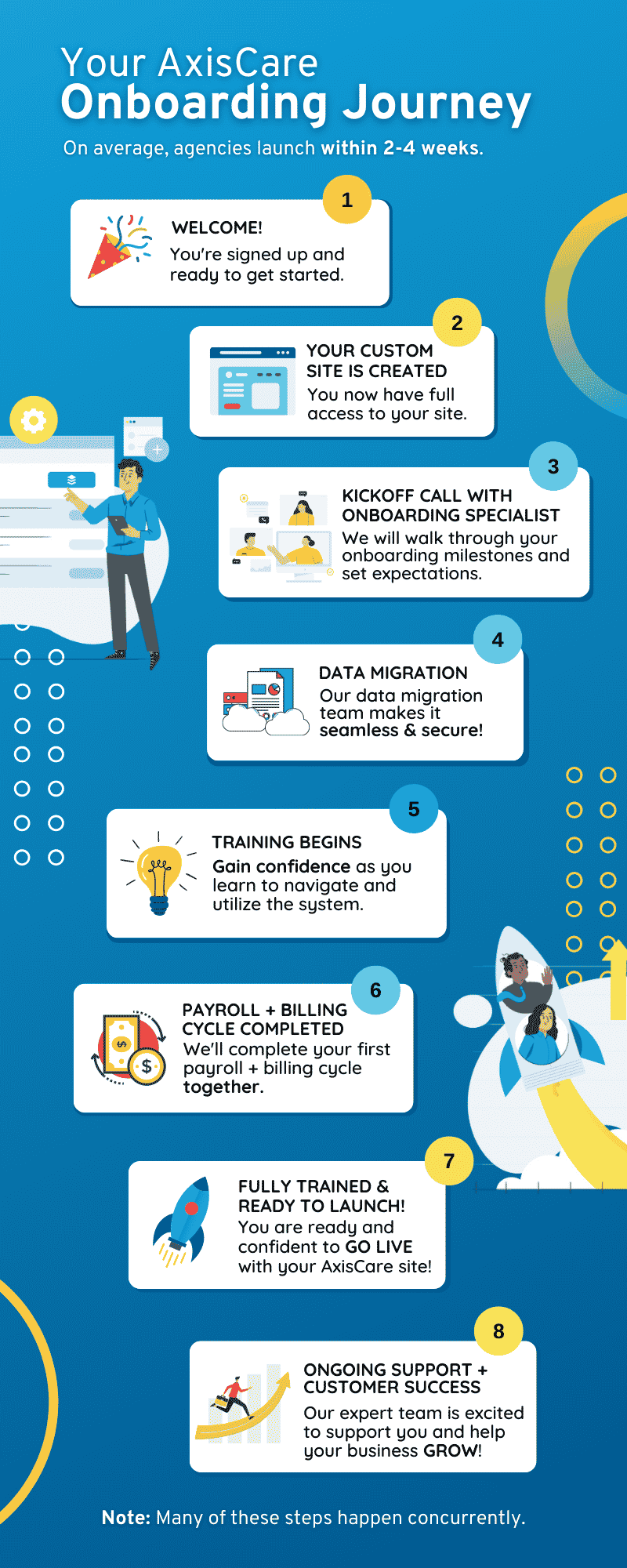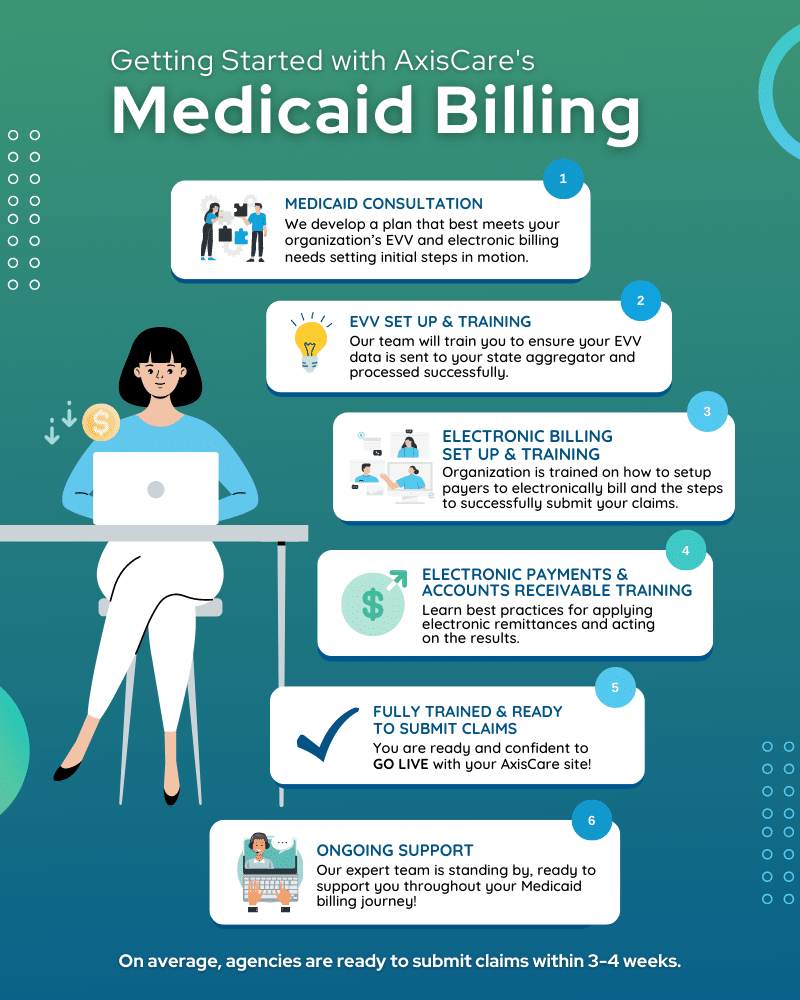What is the 90-Day Turnover in Home Care?
The home care industry has an open secret: it’s notoriously difficult to keep caregivers on board for the long haul, let alone the short term. The median turnover rate is currently hovering around 80% within the first 100 days of hiring someone new—a staggeringly high number that constantly puts agencies on the back foot.
The resources required to maintain this endless cycle are significant. The cost of attracting, vetting, and training new hires adds up to a hefty price tag, but within three months or so, that investment is virtually negated as those very same employees churn.
In this piece, we’ll break down the “why” behind this exceptionally high turnover rate and how agencies can fight back with measured, strategic initiatives.
The Top Causes of 90-Day Turnover
Home care is subject to a uniquely complex web of turnover-inducing factors. For starters, many agencies do not vet their candidates properly due to a constant need for new staff. The goal is often to hire as quickly as possible to fill existing gaps without considering whether they’ve found the right fit for their organization. Employees are trained at great expense to the agency, only to realize this job is not for them.
At-home caregiving also comes with erratic or inflexible hours. Agencies must work around clients’ schedules, and with a thin talent pool to pull from, employees often have to work long shifts with little say regarding their preferences. What’s more, the pay is not usually competitive; one out of four caregivers lives below the poverty line.
To top it off, this job comes with a higher emotional and energetic toll than many others. Caregivers spend all day interfacing with clients who are often in challenging situations, whether physical or mental. This can feel taxing and draining, leaving them with little energy left to address their own difficulties or those of their loved ones.
The Impact of High 90-Day Turnover on Home Care Agencies
If we compare a home care agency to a bucket, high turnover is a hole in the bottom. Agencies pour time and resources into hiring and training new staff, but before too long, those resources leak right out of the bucket as they depart within mere months. This translates to hefty financial losses and very low ROI.
Employee churn also takes a toll on client satisfaction. One of the many tenets of delivering quality care is consistency: clients build rapport with their assigned caregiver and slowly feel more at ease conducting visits at their home. But when staff turns over quickly, these relationships don’t last, and clients constantly have to start from scratch as new faces enter their personal space.
Internally, it makes it more difficult to create team cohesion when people are constantly coming and going. In the absence of a tight-knit social fabric, morale can suffer, and caregiver loyalty can take a hit.
Strategies to Reduce 90-Day Turnover
Given the pervasiveness of high turnover, it may seem overwhelming and inevitable. But there are strategies to boost retention – from more intentional onboarding practices to workplace culture improvements – and keep caregivers on for the long haul.
Creating Clear and Descriptive Job Descriptions
Faced with a staffing shortage, it may be tempting to post more generalized caregiver job descriptions to reel in as many applicants as possible. However, this strategy rarely works in an agency’s favor; in many cases, it only serves to attract candidates who are not entirely qualified or who do not gel with your company culture.
You should aim for quality, not quantity. It’s better to interview five people and retain one long-term than interview dozens and have them quit within the quarter! Detailed job descriptions that clearly state expectations and requirements will help less-aligned candidates self-select out of the process. Well-defined roles will also make the hiring process easier on your HR team, saving time and resources right off the bat.
How to Build a Retention Plan for Caregivers
Crossing your fingers and asking caregivers, “How’s it going?” is not a retention plan! The first 90 to 100 days of a new hire’s working life are make or break, so you’ll need a structured and repeatable approach in place.
This plan should include standing appointments for mentorship meetings and routine check-ins at 30, 60, and 90 days. Mentorship is a particularly interesting pillar of this process: it establishes a personal connection that draws new hires into your team, giving them a safe outlet to seek guidance and ask on-the-fly questions.
Create a Clear Onboarding Plan
Similar to a retention plan, your home care onboarding process should be designed to send new employees into the field feeling confident and well-prepared. Begin with a quick cultural introduction to the agency’s mission, values, and structure, then sail right into on-the-job basics. Initial training should cover core caregiving skills, safety and compliance protocols, and a run-through of any home care technologies they’ll be using.
Wrap up by outlining clear performance expectations backed by specific and realistic goals that set them up for success. Make it clear that asking for help is always welcome, and you’ll be there to support them as they zoom up the learning curve.
The Role of Leadership and Management in Reducing 90-Day Turnover
Strong leadership and supportive management practices also play a role in retention. Remaining in regular contact with caregivers and recognizing their achievements are critical within the first 90 days – here’s why.
Measuring and Monitoring Turnover Effectively
Tracking your 90-day turnover rate is simple enough, as long as you have the right tools in place to manage your human resources. Home care platforms are designed specifically for this use, keeping tabs on your incoming and outgoing staff members while creating reports that reveal trends and insights.
Are your new hires even making it the full 90 days? At what point during the learning journey are you seeing the most attrition? Pinpointing the “when” behind caregiver departures can also lead to understanding the “why,” highlighting the most important times to intervene and support staff proactively.
Leveraging Technology to Support New Caregivers and Reduce Turnover
Agencies can use home care technology to improve caregivers’ working lives. Supported employees are happy employees, and happy employees have no reason to run out the door!
Tools like intelligent scheduling can optimize caregivers’ routes, increase shift predictability, and boost lifestyle alignment: using AxisCare, one agency was able to give 88% of their caregivers more than 70% of their Preferred Work Hours, which directly contributed to an increase in retention rates.
Communication platforms like two-way chat makes it easier for staff to update each other, significantly reducing misunderstandings in an often hectic and ever-changing environment.
Reduce Caregiver Turnover With AxisCare
With the right technology partner, agencies can make it past 90 days with flying colors. Request a free demo from AxisCare to learn more about how we can build an effective retention program.









